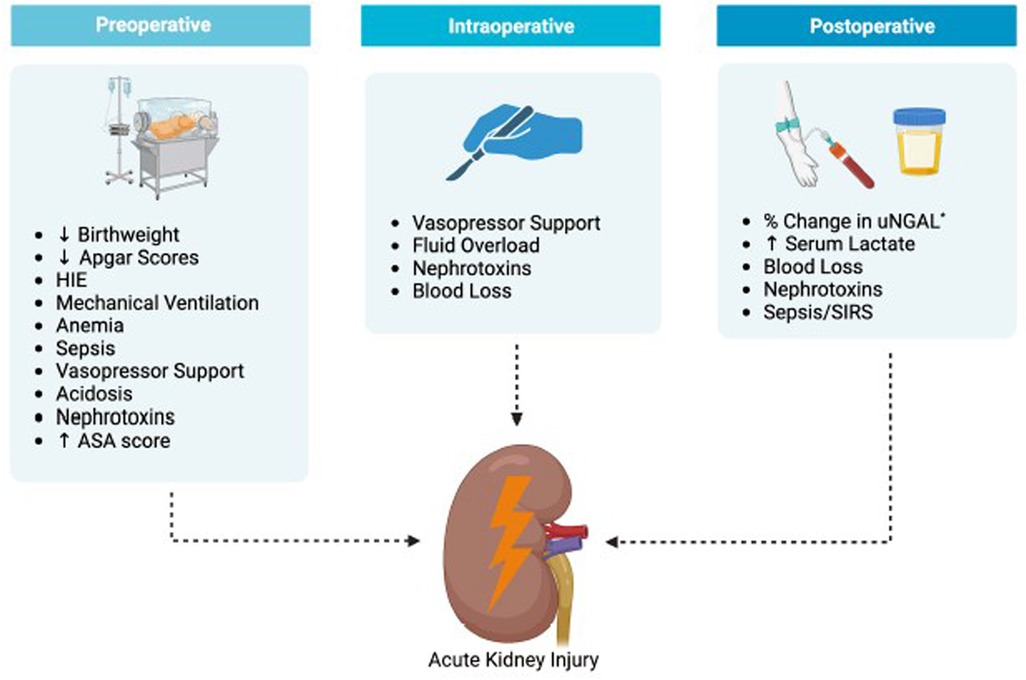- Department of Anesthesiology and Pain Management, University of Texas Southwestern Medical Center, Dallas, TX, United States
Editorial on the Research Topic
Perioperative organ dysfunction and protection in neonates and preterm infants
A global snapshot at potential ways to lower neonatal morbidity and mortality
Globally, there are approximately 2.3 million neonates who die in the first 28 days of their life from various causes. Prematurity secondary to maternal hypertensive disorder of pregnancy (HDP) remains a leading cause of very preterm birth. In this Research Topic in Frontiers in Pediatrics, (Ge et al.) report the rate of HDP among mothers of very preterm infants (VPI) in the Chinese Neonatal Network. This article perhaps shines new light on the effect of HPD on neonatal outcomes.
Not every country has the resources of China or Western countries. In this Research Topic in Frontiers in Pediatrics, (Abiy et al.) report a prospective cohort study on the incidence of death and its predictors among neonates admitted with sepsis to a referral hospital in northwest Ethiopia. They find low birth weight, prematurity, duration of labor longer than 24 h, not breastfeeding, having respiratory distress syndrome (RDS), and oxygen saturation lower than 90% as being the significant predictors of death among neonates admitted with sepsis. They diagnosed sepsis by questionaries rather than blood culture. Their findings are more relevant to low-income countries.
For some neonates, surgical intervention is required in the newborn period. One of the leading causes of perioperative complications is intra-operative hypothermia. Not only can hypothermia lead to catecholamine surges, increased metabolism, and vasoconstriction, but also leads to prolonged post-operative extubation times and surgical site infection. Despite the wide recognition of these detrimental effects, intra-operative hypothermia, defined as a temperature lower than 36°C, is still alarmingly high. In this Research Topic in Frontiers in Pediatrics, the retrospective observation study by Lai and colleagues (Zhao et al.) reports an 82.83% incidence of hypothermia intraoperatively despite the application of forced warm air mattresses and warmed intravenous fluid. It illustrates that there is still a lot of room for improvement. They further describe whether a cuffed endotracheal tube or low fresh gas flow technique were utilized and whether the setting of Operation Room temperature might have helped to pinpoint the causes for this high intra-operative hypothermia rate.
Another common peri-operative complication, in particular for those neonates receiving intra-abdominal procedures, is acute kidney injury (AKI). In this Research Topic in Frontiers in Pediatrics, Duong and colleagues (Duong et al.) present a review of this topic. Figure 1 displays the associated risk factors for AKI divided into pre-operative, intra-operative, and post-operative stages. Equipped with this knowledge, clinicians need to maintain stable hemodynamics and euvolemia and avoid nephrotoxic medications such as gentamicin, vancomycin, and nonsteroid antiinflammation drugs (NSAIDs) to achieve prevention or mitigation of AKI.

Figure 1. Risk factors associated with AKI development post abdominal surgery. HIE, hypoxic ischemic encephalopathy; uNGAL, urine neutrophil gelatinase-associated lipocalin; SIR, systematic inflammatory response syndrome *percent increase in uNGAL from pre- to 24 h postoperation.
From better-controlling hypertension during pregnancy and the early detection of sepsis among neonates, to maintaining normothermia intraoperatively and the prevention or mitigation of AKI, there seem to be a lot of opportunities for clinicians tasked with the care of neonates.
Author contributions
JZ: Writing – original draft.
Conflict of interest
The author declares that the research was conducted in the absence of any commercial or financial relationships that could be construed as a potential conflict of interest.
Publisher's note
All claims expressed in this article are solely those of the authors and do not necessarily represent those of their affiliated organizations, or those of the publisher, the editors and the reviewers. Any product that may be evaluated in this article, or claim that may be made by its manufacturer, is not guaranteed or endorsed by the publisher.
Keywords: neonate, mortality, morbidity, hypothermia, acute kidney injury, hypertension
Citation: Zhong J (2023) Editorial: Perioperative organ dysfunction and protection in neonates and preterm infants. Front. Pediatr. 11:1271066. doi: 10.3389/fped.2023.1271066
Received: 1 August 2023; Accepted: 4 September 2023;
Published: 5 October 2023.
Edited and Reviewed by: Eugene Dempsey, University College Cork, Ireland
© 2023 Zhong. This is an open-access article distributed under the terms of the Creative Commons Attribution License (CC BY). The use, distribution or reproduction in other forums is permitted, provided the original author(s) and the copyright owner(s) are credited and that the original publication in this journal is cited, in accordance with accepted academic practice. No use, distribution or reproduction is permitted which does not comply with these terms.
*Correspondence: John Zhong am9obi56aG9uZ0B1dHNvdXRod2VzdGVybi5lZHU=
 John Zhong
John Zhong